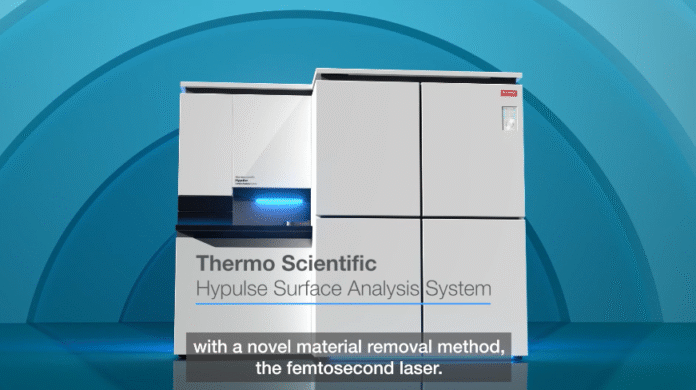WALTHAM, Mass.– Thermo Fisher Scientific, the world leader in serving science, has unveiled the Thermo Scientific Hypulse Surface Analysis System, a breakthrough in X-ray photoelectron spectroscopy (XPS) depth-profiling designed to transform how researchers understand material surfaces.
The Hypulse system is set to play a vital role across industries, from advancing energy storage to enhancing fire protection and improving medical implants. By providing more precise surface analysis, it enables scientists to extract deeper insights that can lead to stronger, longer-lasting and safer materials. For medical applications, the technology offers the potential to improve implant coatings for better biocompatibility, longevity and infection resistance.
At the core of the system is a pioneering femtosecond laser material-removal method. Unlike traditional techniques, this approach preserves sample accuracy, accelerates data collection and allows profiling at greater depths.
“The femtosecond laser has many advantages,” said Professor Mark Baker, surface science and engineering, University of Surrey. “It eliminates chemical damage, records the true composition of samples more quickly and allows profiling at greater depths than before.”
David Wall, vice president and general manager of materials science at Thermo Fisher Scientific, emphasized the company’s focus on customer needs. “With Hypulse, we’ve built on our industry-leading surface technology while adding new capabilities. By combining our proven MAGCIS ion source with femtosecond laser technology, researchers can study samples that aren’t suitable for ion beam methods.”
The launch of the Hypulse Surface Analysis System marks a significant step forward for scientists seeking faster, more accurate and more versatile surface characterization tools.


